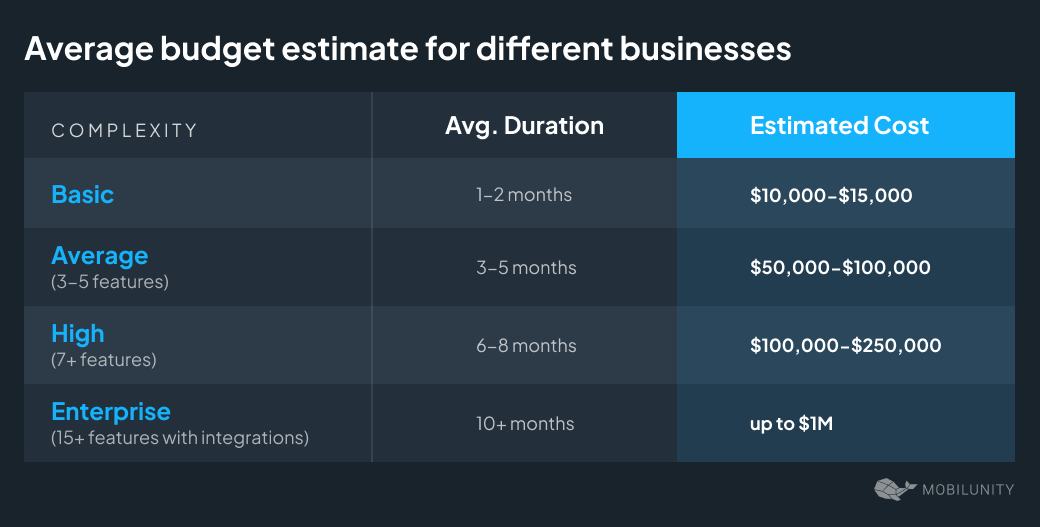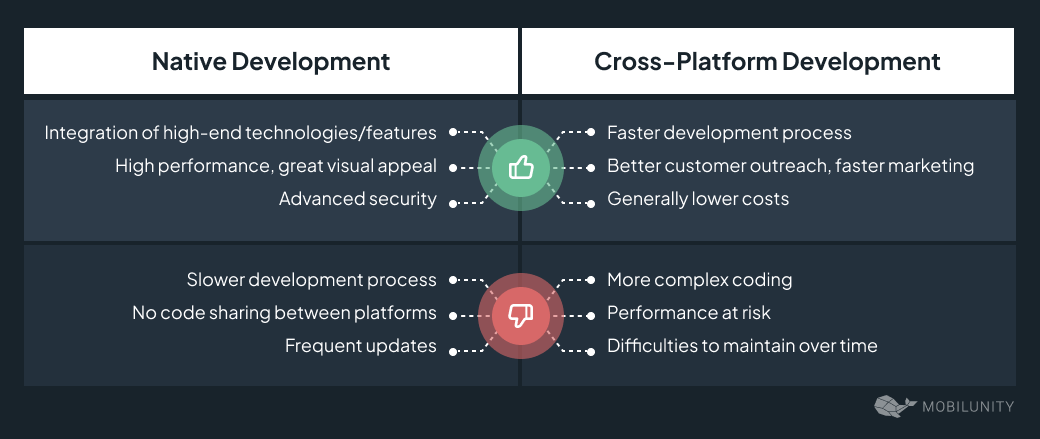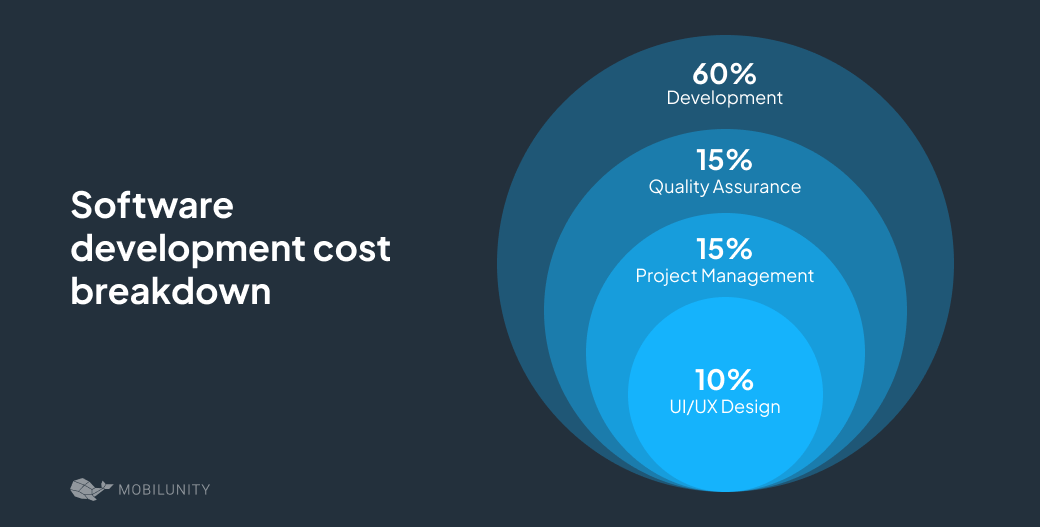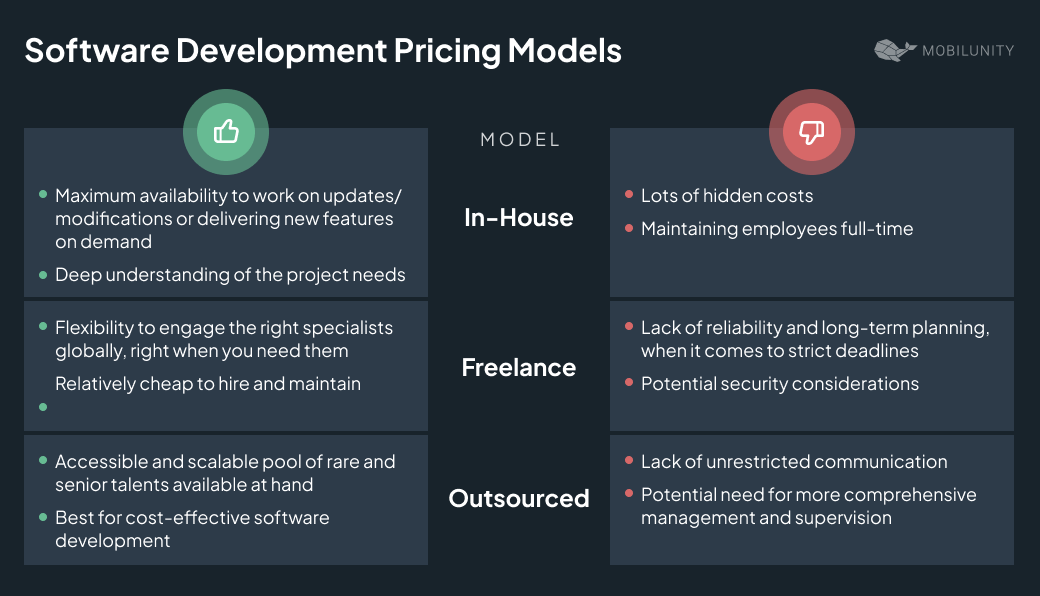Software Development Costs: A Complete Guide for Founders, Executives and Tech Leads

In 2024, giving an accurate estimate of software development costs remains pivotal for all – from startups and small/mid-sized companies to large corporations. According to “Markets and Markets.com”, the global market is expected to grow from $521 bn (2021) up to $1,275 bn by 2026.
Indeed, the adoption of new technologies and digital solutions keeps growing across different industries. However, while the price of development remains disputable and tech advancement gains traction, a wrong move in estimation can go far beyond financial strains. Even the slightest misstep here can draw the line between a successful project and a complete disaster.
Below let’s dive into all the ins and outs of software development costs to estimate and manage them effectively.
Giving a closer look at choosing the right team, this guide is intended to help you with:
- Launching new software products,
- Scaling existing solutions,
- Automating your processes,
- Improving systems cost-effectively and predictably.
What Encompasses Software Development Costs?
Software development pricing may vary depending on the size of the company (startup, mid-size, enterprise-grade) and the type of software (web, mobile, enterprise, etc).
Most commonly, the investment for basic custom software solutions revolves around $50K. However, this price may go up, generally as a result of the higher complexity of the target system.
Medium projects are usually found within $70K to $250K. And large projects that require advanced features, scalability and integrations (for example, aiming for extensive CRM systems) can reach as high as $1M. But accurate estimation is impossible without an in-depth analysis of your project, a clear understanding of business objectives, approved schedules, and time frames.
Below are the primary drivers that are most likely to make up your software development costs.
Key Factors Influencing Software Development Costs
How much is the cost of programming an app?
The answer will be different for every specific project, based on its unique requirements and technical capabilities. The overall price tag will stem from a range of key factors:
- size and user base
- level of complexity
- deployment platforms
- integration platforms
- design complexity.
Size and User Base
This refers to the number of modules or screens/pages in your product, meaning the more it has, the more work and time it will take to be developed. Another important component of the overall software development costs is the user base. It commonly drives the amount of time and effort needed to get everything properly optimized and tested.
For example, basic software (e.g. on-demand apps for small business, personal trackers, or productivity apps) can be built up with just a dozen screens/pages. Medium and large-scale projects (e.g. E-commerce platforms, CRM systems, ERP, or Healthcare management systems) won’t be that easy and, therefore, will drive the price of development to a significantly higher degree.
Complexity
Software complexity is all about the logic behind your project – the more complicated it is, the more challenging for development, testing, and deployment it will be.
The logic here refers to:
- Complexity of software features (specific business needs, sophisticated rules),
- Technology (when your project stands out and cannot be delivered through a traditional tech stack),
- Complexity of UI/UX design.
Deployment Platforms
The cost of software development depends highly on platforms of your choice and their specifications. While the price for each platform may vary, each has a different number of devices for deployment.
For example, going for native development will require separate codebases for each platform and will almost certainly be more time-consuming and costly. Cross-platform development can significantly cut your budget, leaving the door open for broader reach on different devices.
Integration Requirements
Your application may include integrations with third-party systems or data migration capacities, such as maps, payment gateways, ERP, Customer Relationship Management systems, or APIs.
Some of your integrations and data migrations may be simple, but more complex ones (e.g. external reporting systems, complex source databases) will require significantly more time and effort – driving software development costs up accordingly.
Design Complexity
Being an equally important component of the software development process, UI/UX design should never be underestimated, as it drives high-quality user engagement and satisfaction. That’s why a fine custom design, backed with non-standard elements and rich functionalities may lead to a heavier total cost of development.
Average Costs for Different Types of Software Development
Understanding the type of the project is the first and most critical thing to do when estimating the cost of your project. From casual web or mobile development to large enterprise solutions, each custom project has its own specifics and will need different amounts of time and resources.
Below are the most common types of software development you may be looking for.
Web Development
Size, domain, functionality, and level of innovation are the primary factors that drive the cost of creating your custom web-based app or website:
- Size. A greater amount of coding naturally translates into more man-hours and impacts the final cost
- Domain. Simple corporate websites usually require considerably less time and resources than huge e-commerce platforms
- Functionality. Some of your advanced features (e.g. payment gateways, APIs, Social Media integrations) will be certainly priced higher
- Innovation. The level of innovation, tech stack, and security (e.g. cutting-edge automation solutions for business) are going to bear a significantly higher price tag when compared to basic and not-that-advanced applications.
The average web application software development costs are found within $5K and may reach $250K (e.g. full-featured web-based app).
Mobile Development
The cost of creating a mobile application depends generally on the number of platforms you’re going to support. Among the commonest examples are native and hybrid mobile development, which will come with completely different price tags. While platform-specific applications will certainly be more costly, hybrid solutions are intended to serve multiple systems using a single code base with less investment.
While related price tags generally range within $15K up to $250K, the MVP for an average mobile application may cost around $50K.
Enterprise Solutions
Enterprise software development comes with large-scale, advanced features, greater integration, and scalability opportunities. Aiming to support lots of internal operations and multiple tasks in real-time (e.g. data analysis, enterprise resource planning, supply chain management, and so on), enterprise solutions usually need to come in line with strict compliance regulations, backed with strong security frameworks.
As a result, the total cost of software development for enterprises starts at no less than $100K and eventually goes over $500K.
Estimating Your Software Development Budget
When taking stock on your software development investment, it’s impossible to make the best-case decision without following these basic steps:
- Start by analyzing your business needs and requirements
- Break down costs by development, project management, and UI and design
- Scour the market and pick a partner that matches your project needs and has experience in your project type.
Step 1: Analyze Your Project
Form a 360-degree vision of your future project.
Examine the market, go through competitors and user personas, and gather detailed business requirements. Outline the project scope and core features of your product, getting prepared for the second step of estimation.
Step 2: Breakdown Your Budget
There are 4 primary development elements that form the total cost of every project.
- Development
- Project Management
- Quality Assurance
- UI/UX Design.
Based on our expertise, we suggest using a simple software development cost estimation template that will give you a rough cost distribution for your budget. Keep in mind, these percentages are intended to give you a basic estimate for successful product development rather than the actual total costs.
Step 3: Get Your Consultation
Once all your project requirements are in place, time to hand them out to a development team. During this stage the estimate wouldn’t be that accurate, however, it gives a good starting point with a general idea of the total development cost.
NOTE! At Mobilunity, we provide a two-step consultation process, first offering a rough assessment to give you a basic understanding of the potential amount of investment. Next, after discussing your project scope and clarifying your project requirements, we can give you flexibility and expertise to allocate budget effectively.
Pro Tip: Your potential partner should provide a basic consultancy service, thoroughly analyzing your set of expected features. Eventually, to come up with estimated costs and timelines.
Hidden Costs And Ongoing Expenses
Here are potential fees and some examples of expenses that are not usually covered by a rough assessment of software development costs. Keep the following in mind to make the estimating process more smooth and predictable.
Maintenance And Support
The first and most considerable hidden cost is maintenance. It refers to post-launch expenses necessary to keep your project up and running, making sure all features are fully functional and come in line with the latest tech advancements. Your maintenance costs will mainly revolve around tech support (e.g. engaging frontend/backend programmers, DevOps) and ongoing expenses, such as web hosting services or custom UX modifications.
Pro Tip: Your maintenance and support budget may eventually reach 1.5-2x development price, so plan your total cost of development accordingly. Also, this spending can be roughly translated into 15-20% of the original costs yearly.
Marketing And User Acquisition
Being often underrated, a proper marketing and user acquisition strategy can make or break your project. Therefore, we strongly recommend considering your total development budget with all related marketing costs in mind. This commonly includes information infrastructure, PR and content sales funnels, Social Media promotion, off-site and on-site Search Engine Optimization, and may sometimes eventually need you to involve the whole in-house marketing team.
Strategies To Optimize Your Software Development Costs
In the case you’ve been trying to make up the estimate on your own – and it still looks unrealistic – below are 3 basic strategies you can use to drive the expected price to the minimum.
MVP Approach
Creating a Minimal Viable Product is a good way to get started at minimal cost. You can come up with a test product and instantly plug into your target audience. MVP will help you understand the general product acceptability, examine business viability, and instantly get the understanding of what works well for you, and what features or functionalities should be offered to end-users later.
Cost-Cutting Measures
You can try a modular approach to software development, forecasting on core features and relying on phased rollouts. This will not only help you launch upcoming features cost-effectively but cause far less disruption to your routine processes.
In case you don’t want your user experience to be purely unique, feel free to go for pre-built UI templates.
And remember about well-laid-out communication and effective project management. This doesn’t necessarily mean you must have a fully stacked in-house development team though.
Choosing The Right Team
The widely available models of software development are limited to just 3 categories: in-house, freelance, and outsourced teams. Each of them has unique advantages and potential drawbacks.
Software Development Pricing Models
We recognize that none of these models can make a perfect fit for your project. There are lots of purely technical and non-technical factors that affect the cost of software development and the quality of the final product.
However, if you’re looking for a balance of expertise and cost-efficiency, our dedicated development team under your technical leadership can ensure your idea is brought to life on time and within the planned budget.
Now What?
Software development cost looks different for every project – encompassing a wide range of factors, including the size of the project and user base, the type of software (level of complexity), the number of platforms for deployment, the number of integrations, and the general design complexity of your idea. What’s important is to have a clear understanding of the project goal with expected KPIs, hidden costs, ongoing expenses, and other enablers.
To get an accurate estimate, you should start by outlining the core milestones of your project to a potential partner. Don’t know where to get started? Contact Mobilunity and tell us about your project. Our consultants will come back shortly to help you with making a software project cost estimation.
Disclaimer: All salaries and prices mentioned within the article are approximate NET numbers based on the research done by our in-house Recruitment Team. Please use these numbers as a guide for comparison purposes only and feel free to use the contact form to inquire on the specific cost of the talent according to your vacancy requirements and chosen model of engagement.










